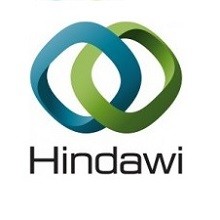
تعیین مشخصات سلولهای بنیادی مزانشیمی انسانی بافتهای مختلف برای درمانهای پیوندی
Abstract
Introduction
Materials and Methods
Results
Discussion
Conclusions
References
Introduction
Mesenchymal stem cells (MSCs) have been isolated from various fetal and adult organs. Friedenstein et al. [1–3] frst described mouse bone marrow MSCs and their multilineage diferentiation potential. Te multilineage diferentiation potential of adult human MSCs from bone marrow was described by Pittenger et al. [4]. Since then, human MSCs from various organs have been described and transplanted clinically in multiple felds of applications [5, 6]. For autologous transplantation, the foremost important practical aspect is for certain the ease of sourcing. Tis makes adipose, skin, or bone marrow a more obvious choice than, for example, liver, placenta, or umbilical cord. Adipose tissuederived MSCs can be obtained by liposuction under general anesthesia, while an iliac crest bone marrow sample can be obtained in a physician’s ofce under local anesthetic. Tis makes obtaining bone marrow MSCs much less invasive than adipose-derived MSCs. Another important aspect for clinical applications is the potentially diferent capability of MSCs from diferent tissues to support the local environment by the release of growth factor and cytokines. More recently, the release of exosomes and microvesicles from MSCs has been investigated for cell-free therapies (for review, see [7]). A variety of diferent growth factors, cytokines, exosomes, and microvesicles have been found to be secreted or taken up by human MSCs; sphingolipids and their receptors were shown to contribute to MSCs functioning and to regulate the course of transplantation (for reviews, see [8–10]). For example, Schinkothe et al. [11] analyzed 120 cytokines and ¨ growth factors in the cell culture medium of human bone marrow-derived MSCs. From these, 44 were found to be secreted into the medium and 40 were taken up from the medium. Shen et al. [12] analyzed 16 growth factors and cytokines that were secreted by human umbilical cordderived MSCs. Efects of transplantation of MSCs have not been only related to the release of growth factors and cytokines, but also to mitochondrial transfer [13] as well as fusion [14, 15] of donor MSCs with host cells. For allogenic MSC transplantation, the option to remove donor MSCs afer patient recovery is of interest in order to avoid long-term efects due to potential cell fusion and immunological complications. Te encasement of MSCs should occur in porous structures with adequate pore sizes as to allow the unrestricted release of secreted molecules but to prevent cell release. Diferent methods for encapsulation of cells for transplantation were described; cells have been commonly encapsulated in alginate [16–20] or other types of gel-like embedding matrices [21– 23], but unusual approaches included, for example, the use of silk [24]. We developed a semipermeable membrane hollowfber assembly that provides adequate and adjustable pore sizes, allows for easy flling, can be variable in length to accommodate various amounts of cells, allows for potential removal of cells if necessary, and is made of biomedical grade materials that have been applied in vivo and in vitro.
